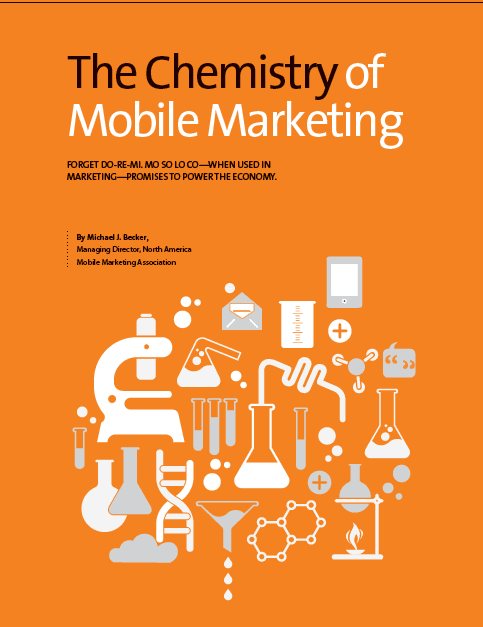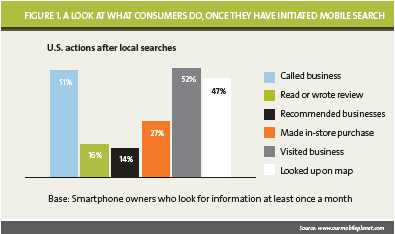The Chemistry of Mobile Marketing
The Chemistry of Mobile Marketing is a chapter in the Sybase Mobile Commerce Guide 2012, which helps financial institutions, mobile operators, and enterprise understand mobile commerce, frame their strategies, and guide their deployments. Click here to download the guide

In the mobile world, relevant information—or relevant marketing—increasingly engages consumers. Four elements, similar to those in a periodic table, are driving this change: Mobile (Mo), Social (So), Local (Lo) and Commerce (Co). When mixed correctly, like two parts hydrogen and one part oxygen, these elements form a compound that powers modern-day marketing and the economies of the world.
Understanding the Elements
Let’s take a closer look at these four marketing elements. What are they, and how can they work together to boost marketing impact, and ultimately steer customers to the products and services they need and want?
Mobile (Mo). Unquestionably, Mo has changed the fabric of society and consumer behaviour. The sales of mobile devices have grown—and continue to grow—exponentially. Britain’s telecoms regulator found that more than one-quarter of British adults uses a smartphone, according to an October 2011 report in The Economist. Most mobile phone sales in the United States are of smartphones, Nielsen estimates. Smartphone sales, according to Gartner, are on track to reach 468 million units worldwide in 2011, a 57.7 percent increase over 2010.
Social (So). Today’s consumers are social. More than 800 million people are on Facebook, and 350 million of them access Facebook through their mobile devices, according to the company. Moreover, these consumers are active. Social networking site Foursquare’s 10 million users “checked in”more than 1 billion times in 2011. Millions more are posting, scanning and reviewingcodes and products. This social activity creates 70 percent of the content (articles, posts, Tweets, Pokes, Likes, pictures, videos and more) on the Internet, according to authors Craig & Ludloff.
Location (Lo). The location element provides the ability to determine the general region—or precise location—of an individual. Taken byitself, location has little commercial value.But when you combine Mo, So, and Lo, something magical can happen: Location can power a relevant engagement.
When an engagement is relevant, marketers can quickly get to the core of consumer’s information needs, such as: Where is the local store? How much will this cost me? Can I get a discount? What do others think? Forexample, 48 percent of adults 18 to 34 years old are more likely to engage with an advertisement that is relevant to their location, while 56 percent are more willing to share their location information for more relevant content, and 81 percent prefer to receive local, ad-supported (free) content than to pay for content (JIWire.com).
IN THE MOBILE WORLD, RELEVANT INFORMATION—OR RELEVANT MARKETING INCREASINGLY
ENGAGES CONSUMERS.
In addition, relevance can be augmented when it is bonded with real-time behavioral analysis. All the interactions that transpire within the engagement, if marketers perform well, can create consumer awareness an positive feelings for the brand, generate loyalty and provide value.
Commerce (Co). Commerce can take two forms: a transaction or a process. As a transaction, Co refers to the exchange of value, often money (but sometimes personal and related information or other tangible values). We often call this “payment” or “mPayment” when the transaction occurs with mobile devices. As a process, Co refers to the steps that both lead up to the payment (price comparisons or confirmations, store locators, needs matching) and immediatelyfollow the payment (installation instructions, user support).
Combining Mo, So, Lo and Co powers relevant, real-time consumer engagement in which every interaction can lead to animmediate exchange of value, anywhere, anytime and through any screen (phone, TV, tablet, game terminal and more).
GIVEN THAT MOST CONSUMERS CARRY A MOBILE DEVICE, MARKETERS MUST ENGAGE CONSUMERS THROUGH ONE OF THE EIGHT MOBILE MEDIA PATHS (SMS, MMS, EMAIL, VOICE, APPLICATIONS, WEB BROWSING, CONTENT AND PROXIMITY) IN COMBINATION WITH TRADITIONAL MEDIA.
Putting MoLoSoCo into Action
Given that most consumers carry a mobile device, marketers must engage consumers through one of the eight mobile media paths (SMS, MMS, email, voice, applications, Web browsing, content and proximity) in combination with traditional media. And because of MoSoLoCo, all marketing now can be interactive, relevant and action-oriented and can guide the consumer to point of purchase and positive brand attribution actions.

These fgures are substantiated in a study conducted in October 2011. Accenture found that 54 percent of mobile users and 35 percent of tablet users plan to use their device while comparing prices in the store while holiday shopping in 2011, while 43 percent of mobile users plan to receive discounts, and nearly one-third (32 percent) plan to receive alerts when a product is in stock during the holiday shopping season (Accenture).
The value of MoSoLoCo should be clear. Marketers who embrace the possibilities of mobile are putting themselves in a winning position where they can bring consumers into the store and have them want to make a purchase.
Furthermore, the power of MoSoLoCo is borne out in compelling, real-world examples. Men’s Wearhouse, after introducing a $5 discount mobile coupon program, added 163,000 subscribers from February to October 2011. The program is not only building relationships, it is paying off. The redemption rate for the program between February and May was 93 percent.
American Express and Foursquare have created a model for what can be done when MoSoLoCo come together for hyperlocal customer engagement. By syncing an American Express card to Foursquare, then checking in at a Foursquare location, the user can download exclusive nearby specials to the subscriber Amex account. When card owners use the American Express card to make purchases, they automatically get savings applied to the transaction. American Express made it simple, and when combined with search, it drives foot traffic and sales.
Add MoSoLoCo to Your Campaigns
Companies not taking advantage of MoSoLoConeed to rethink their strategies. With the help of
Michael Becker is an intentionally recognized identity & personal information management solutions strategic advisor, speaker, entrepreneur, and academic. He advises companies on personal information economy business strategy, product development, business development, and sales & marketing strategies. He also represents them at leading trade groups, including the Mobile Ecosystem Forum. Michael is an advisor to Assurant, Predii, Privowny, and Phoji. He is the co-author of Mobile Marketing for Dummies and a number of other books and articles related to mobile marketing, identity, and personal information management. He is on the faculty of marketing of the Association of National Advertisers and National University. A serial entrepreneur, Michael founded Identity Praxis, co-founded mCordis and The Connected Marketer Institute, was a founding member of the Mobile Marketing Association (MMA), and was on the MMA board of directors for ten years and was MMA’s North American Managing Director for three years. In 2004, Michael co-founded iLoop Mobile, a leading messaging solutions provider. In 2014, Michael was awarded the 2014 Marketing EDGE Edward Mayer Education Leadership Award for his commitment to marketing education.

